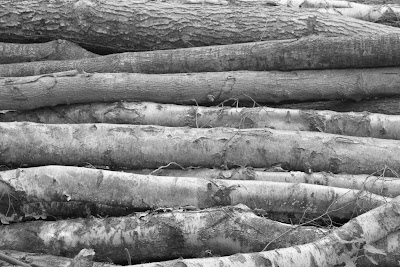Deciding the subject.
This was the easiest exercise to date for me, there really was not deciding of a subject or writing a list of things to photograph for this, it was simply a case for me to walk out and about with my camera and see everything on offer, curves everywhere!
This again was an exercise where one shot decided itself it was just a case of me finding it! I had an image in my mind of the end of logs, all the rings of age on the tree that had been cut down stacked into a timber pile.
Whilst in the woods, I noticed two very small pine cones that had fallen still attached to the branch, I loved the curves and the way they almost entice the eye into their shadow, wondering what is inside.
Also being spring, it’s a very beautiful time of year, where new things are born and everything begins to grow, so it was very simple for me to photograph the beauty of the curves you can find in a rose.
I was recently asked to do a shoot and photograph a baby bump, you really can’t get much curvier than a heavily pregnant woman and the photo I took really emphasises the curve of her tummy as it is a complete contrast to the background.
Yet one photo, I was in the right place at the right time with my camera in hand, the curves here creating the feeling of protectiveness yet elegance, preparing for the gift of life.
Equipment used.
Camera: Canon 500D
Lenses: Canon 18mm-55mm, Tamron 70mm-300mm.
Flashgun: Canon 430EXII
Settings and results.
 IMG: IMG3430ee
IMG: IMG3430ee  IMG: IMG5872E
Setting: Aperture priority
Focal Length: 77mm
Equivalent in 35mm: 123mm
Shutter Speed: 1/1000
Aperture: f/5
Flash: Not used
Metering: Matrix
ISO: 100
White Balance: Manual
IMG: IMG5973
Setting: Landscape
Focal Length: 37mm
Equivalent in 35mm: 59.2mm
Shutter Speed: 1/40
Aperture: f/5.6
Flash: Not used
Metering: Matrix
ISO: 250
White Balance: Auto
IMG: IMG5901e
Setting: Manual
Focal Length: 300mm
Equivalent in 35mm: 476mm
Shutter Speed: 1/250
Aperture: f/5.6
Flash: Not used
Metering: Matrix
ISO: 1600
White Balance: Auto
IMG: IMG5872E
Setting: Aperture priority
Focal Length: 77mm
Equivalent in 35mm: 123mm
Shutter Speed: 1/1000
Aperture: f/5
Flash: Not used
Metering: Matrix
ISO: 100
White Balance: Manual
IMG: IMG5973
Setting: Landscape
Focal Length: 37mm
Equivalent in 35mm: 59.2mm
Shutter Speed: 1/40
Aperture: f/5.6
Flash: Not used
Metering: Matrix
ISO: 250
White Balance: Auto
IMG: IMG5901e
Setting: Manual
Focal Length: 300mm
Equivalent in 35mm: 476mm
Shutter Speed: 1/250
Aperture: f/5.6
Flash: Not used
Metering: Matrix
ISO: 1600
White Balance: Auto

IMG: IMG4552e
Setting: Programme
Focal Length: 124mm
Equivalent in 35mm: 197mm
Shutter Speed: 1/60
Aperture: f/4.5
Flash: Used (flashgun)
Metering: Matrix
ISO: 400
White Balance: Manual
Findings and conclusion.
I absolutely loved this exercise, curves are everywhere and they really can add the grace and elegance to a photo, as the material states.
IMG3430ee, macro of a rose, really shoes the beauty of the curve on each petal, gently guiding the viewer to the centre of the rose. However I love the way this shot can work both ways, you can be lead in via the petals, or your attention can be drawn straight to the centre of the flower, then gently work your ways to the edges via the curves.
Without doubt though, IMG5872e is my favourite in this exercise. I was simply in the right place at the right time with my camera in hand when the swan stood up off the nest and exchanged positions with its partner, taking it in turns to keep the eggs warm. Swans in my opinion are very elegant creatures to photograph and I love the contrasts here, the swan, standing proud over the nest, the most beautiful curve of the head and neck, casting an eye on the eggs. This is further added too with the curved lines by the formation of the nest and the eggs themselves, all being curves.
I find when I photograph something that has strong curves, it is either really quite graceful, elegant, something of beauty or something that creates a feeling that I want to find my way through the curves and follow the lines in a maze like fashion, similar to the curves found in IMG5973.














































